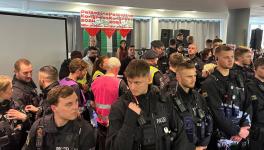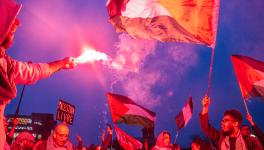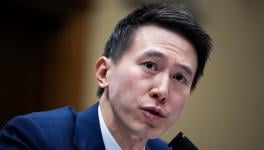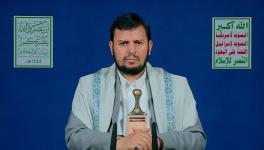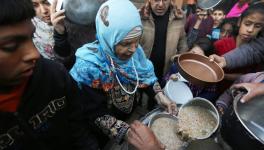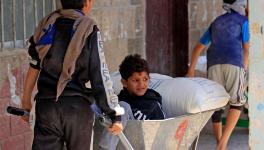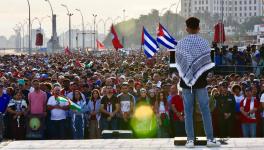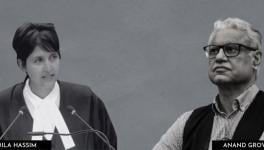Remembering Nakba
Palestinians commemorate Nakba Day on the 15th of May every year.
The Nakba, which in Arabic means "the catastrophe", refers to the forcible expulsion of 700,000-800,000 Palestinians from their land in the time leading up to and following the creation the state of Israel in 1948. In human terms, this meant the mass deportation of a million Palestinians from their cities and villages, and the massacres of civilians.
Contrary to claims that the Palestinians decided to leave, author and journalist Ben White points out, "those who left did not do so of their own volition." The cleansing of Palestinians from Palestine was part of deliberate strategy on the part of Zionist leaders. According to University of Exeter Professor Ilan Pappe, "Zionist leaders decided that the best means of making the vision of a Jewish Palestine possible was by forcefully dispossessing the Palestinians from their homeland."
On the eve of April 9th 1948, armed members of Jewish underground groups attacked the village of Deir Yassin, a strategic site towering Jerusalem from the West. After the fall of Al Qastal a few days earlier and the killing of Palestinian guerrilla leader Abdul Qader Al Husseini, Deir Yassin became the most important point on the road to Jerusalem.
Here are 2 eye witness testimonies of the Deir Yassin massacre as told to journalist Elias Zananiri, previously published in 9.4.1997 in "Gulf News".
Abu Mahmud 70 who currently lives in the Old City of Jerusalem, says:
"I was in the village when the Jews attacked. My colleagues and I were on the western side of the village, opposite Al Qastal. We had our guns on us. All villagers, mainly the youths, were ready for whatever may happen after the Qastal battle was over. By 16:30 on Thursday 8 April 1948, Abdul Qader Husseini was killed as we were watching the battle from a distance. After his death, we took precautionary measures in case anything would happen: We guarded the village until 02:30 the next morning when the Jews started entering the village with the use of spot and search lights looking for our fighters. The Jews closed on the village amid exchanges of fire with us. Once they entered the village, fighting became very heavy in the eastern side and later it spread to other parts, to the quarry, to the village center until it reached the western edge. The battle was on three fronts, east, south and north. The Jews used all sorts of automatic weapons, tanks, missiles, and cannons. They used to enter houses and kill women and children indiscriminately. The youths in the village fought bravely against them and the fighting continued until it was around 15:30 afternoon.”
“We had no aid or support from any party. They took about 40 prisoners from the village. But after the battle was over, they took them to the quarry where they shot them dead and threw their bodies in the quarry. After they removed their dead and wounded, they took the prisoners and killed them. They took the elderly prisoners, women and men and took them out of the village, yet they killed the youths. They called on us to surrender, to throw our weapons and to save ourselves. But we did not imagine them breaking into the village. We expected the fighting to last one or two hours, after which they would retreat. But they continued the fighting.”
“We had trenches. The Jews filled one of those trenches with sand and rocks in order for their tanks to cross. When we hit the tank, it started firing from its machine-guns at our positions in the western edge of the village.”
“I remember, from what my uncle’s wife told me, that an uncle of mine, who was a schoolmaster, had killed the commander of the invading gangs on the staircase of one of the houses and later he disappeared for three days. Then, they found him with his mother, originally from Latakia in Syria, they saw him with her, and his name was Ribhi Atiyyeh. She disguised him in women's clothes to make sure that she could get him out of the village. They identified that he was a man; they opened fire and killed him. That is what I heard from my uncle’s wife, but I did not see it happening before my eyes.”
“After the June 1967 war, I met a Jewish eyewitness, Ibrahim Najjar (Israeli of Arab extraction), who lived in Givat Shaul and whom I had known before 1948. He took me to visit the village, as we arrived, I stood by the well and read some verses from the Koran. He told me not to do that. "There isn’t anybody here. Come with me and I will show you were they were all buried." He took me to the quarry where he said: "Here is where you should read the Koran. Two Jews held a body of an Arab dead and threw it down in the valley, some 20 meters in depth." That is were they threw bodies of the 14 martyrs who were killed there."
Um Mahmud, wife of Abu Mahmud who was 15 years old at the time, says:
"We were inside the house. We heard shooting outside. My mother woke us up. We knew the Jews had attacked us. My cousin and his sister came running and said the Jews were already in our garden. In the meantime, fighting became heavier and we heard lots of gunshots outside. A bomb was thrown at us and it exploded close to where we were in the yard. My sister- in-law did not want to leave. She was frightened. The girl was two months old and the boy about three. I took the two and my mother said we should go to my uncle’s house.”
“I saw how Hilweh Zeidan was killed, along with her husband, her son, her brother and Khumayyes. Hilweh Zeidan went out to collect the body of her husband. They shot her and she fell over his body. I also saw Hayat Bilbeissi, a nurse from Jerusalem serving in the village, as she was shot before the house door of Musa Hassan. The daughter of Abu El Abed was shot dead as she held her niece, a baby. The baby was shot too. Whoever tried to run away was shot dead."
The Nakba also saw hundreds of Palestinian villages being razed to the ground.
Moshe Dayan, chief of staff, Israel Defense Forces and Minister of Defense during the 1967 war in his address to the Technion, Haifa (as quoted in Ha'aretz, 4 April 1969) said, "Jewish villages were built in the place of Arab villages. You do not even know the names of these Arab villages, and I do not blame you because geography books no longer exist, not only do the books not exist, the Arab villages are not there either Nahlal arose in the place of Mahlul; Kibbbutz Gvat in the place of Jibta; Kibbutz Sarid in the place of Huneifis; and Kefar Yehushu'a in the place of Tal al- Shuman. There is not one single place built in this country that did not have a former Arab Population."
Walid Khalidi in his book, All That Remains: The Palestinian Villages Occupied and Depopulated by Israel, writes, “"By the end of the 1948 war, hundreds of entire villages had not only been depopulated but obliterated, their houses blown up or bulldozed. While many of the sites are difficult of access, to this day the observant traveler of Israeli roads and highways can see traces of their presence that would escape the notice of the casual passerby: a fenced-in area, often surmounting a gentle hill, of olive and other fruit trees left untended, of cactus hedges and domesticated plants run wild. Now and then a few crumbled houses are left standing, a neglected mosque or church, collapsing walls along the ghost of a village lane, but in the vast majority of cases, all that remains is a scattering of stones and rubble across a forgotten landscape."
Newsclick commemorates Nakba Day by paying tribute to two farmers in the Occupied West Bank who have been fighting for their right to their fields, homes and livelihood. To watch the feature please follow the link given below:
Fighting for their land; two farmers in the West Bank
Get the latest reports & analysis with people's perspective on Protests, movements & deep analytical videos, discussions of the current affairs in your Telegram app. Subscribe to NewsClick's Telegram channel & get Real-Time updates on stories, as they get published on our website.










